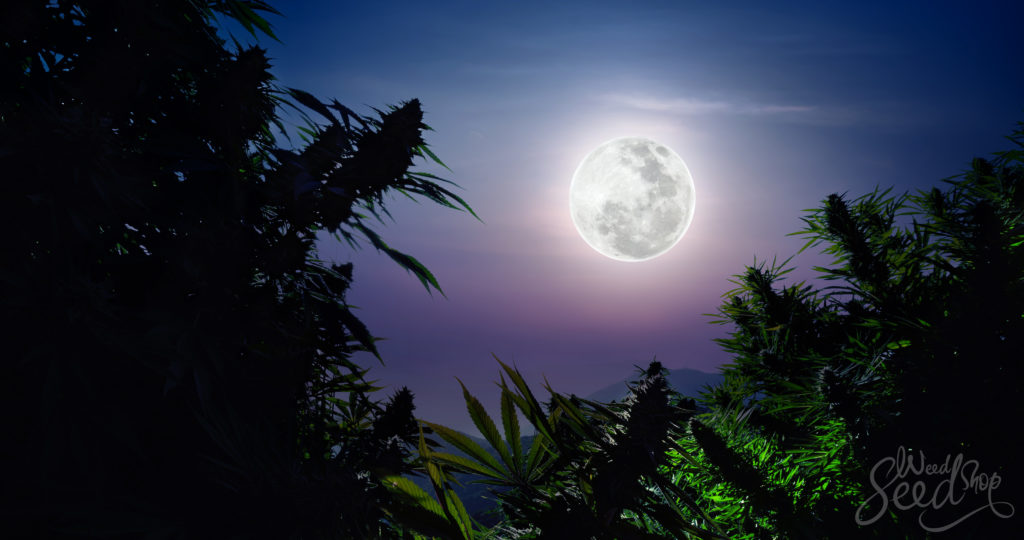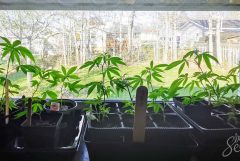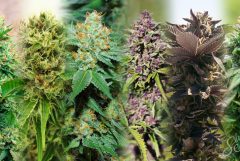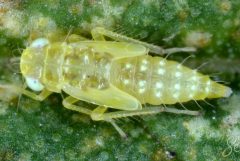Lunar planting is an agricultural technique that humans have been using for a long time. Modern farmers call it “biodynamics”, and this method of gardening forms the basis of organic farming. This article will inform you all about how the moon interacts with your cannabis garden and how you can apply that knowledge when growing weed.
Using the moon as a guide to growing anything might seem like ancient practice. And it is. But there are modern growers who are adhering to this ancient method of agriculture with plenty of success.
New age growers of cannabis think primarily about the schedule of the sun (or artificial lights in the case of indoor growing), but neglect what’s happening in outer space during the night. Naturally, plants respond just as strongly to the moon as they do to the sun, and this heavily overlooked part of agriculture is important to growing anything.
Think about it. The moon and the sun are the two most important objects in the solar system with respect to Earth. Learning how to use both, especially in relationship with one another, can add just that extra bit of finesse to your final product.
There are so many factors when it comes to growing any plant, such as soil, light, nutrients etc. Each one is just as important as the other, and the moon is absolutely no exception to this. The more a grower can pay attention to even the most minute details, the precise his or her work becomes.
If you’ve been in the dark about moon cycles and how they affect your plants, it’s finally time to step into the moonlight. This could very well be the difference between a mediocre crop and an amazing one.
Why do moon phases affect agriculture?
Although lunar agriculture has its roots in civilizations that existed a long time ago, there is some scientific information to suggest that it is still applicable. In fact, lunar planting belongs to a discipline called biodynamics, which relies heavily on the patterns of nature to sustain agriculture. It is the organic method of farming, rather than using greenhouses, chemical fertilizers and pesticides.
Many principles of biodynamics come directly from the lectures of Rudolf Steiner, who specifically mentions the moon and its effects in farming. Steiner pointed out that the element most heavily affected by the moon’s movement is water. Modern science also recognizes this with evidence that the ocean’s tide is affected by the gravitational pull of the moon.
This is the basic principle behind the concept of lunar agriculture. Water is an essential element to all life on Earth, and all life on Earth is heavily affected by it. Effectively, when something affects the movement of water within an organism, the whole organism forms a response.
It might seem folkloric, and perhaps it is. But the basic principles of biology kind of support the ideas at the root moon phases and planting. There are popular schools of thought that rest on the principles of biodynamics, and those implementing these ideas have success.
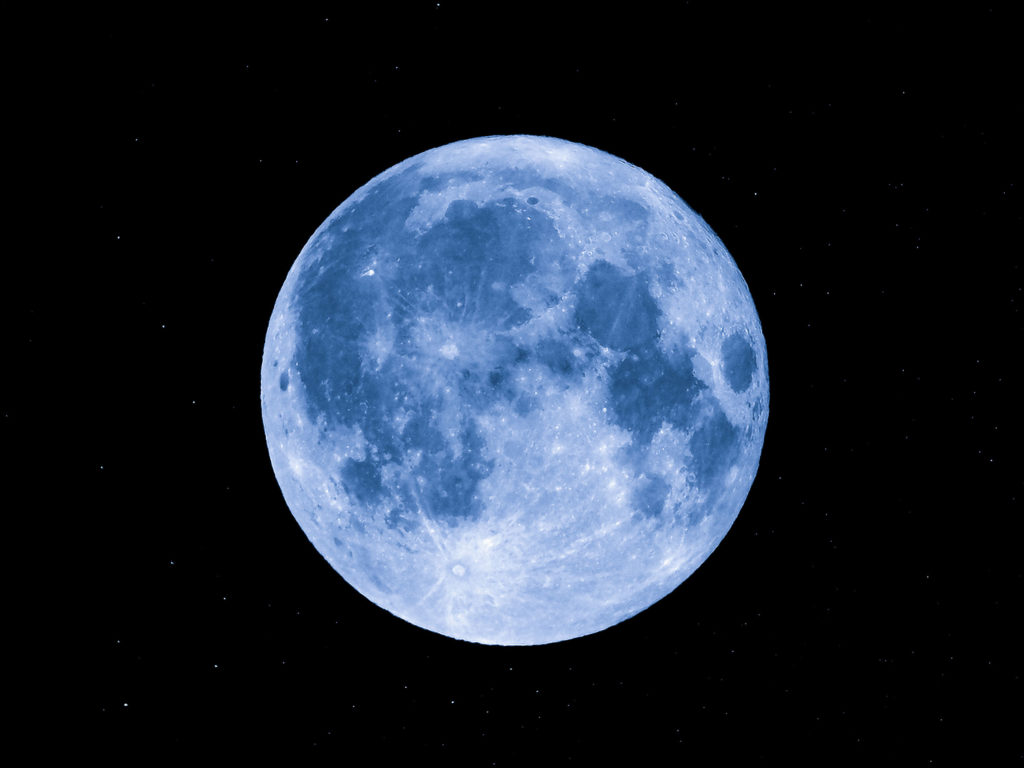
Let’s look at moon phases
Most of us a familiar with the moon rhythm that goes from new moon to new moon. It takes about 28 days (remember that other cycle that takes 28 days?), where the moon waxes from new to full and then wanes from full to new. This is about the moon’s relationship with the sun.
When it is the new moon, the Earth is almost exactly between the moon and the sun. It is within this rhythm that most agricultural observations have been made, and we will elaborate on this a little more later.
However, there are many other rhythms of the moon, and they too affect the way we can interact with plants and the Earth. For example, another rhythm of the moon is how it interacts with planet Saturn. Every 27.5 days, the moon and Saturn are directly opposite, with the Earth between them. This rhythm also affects planting.
Another pattern of the moon is its path across the sky. The moon is sometimes higher in the sky and sometimes lower. The sun also follows a path similar to this, except that it takes a whole year to complete its journey across the sky. The moon, on the other hand, takes about 27 days to complete this path.
There are so many ways to observe the moon, in fact. And the moon’s relationship with water necessarily means that it is going to affect the moisture in your plants. You can consider the moon’s relationship with other planets, as well as the moon’s activity in the hot season or cool season.
As you can see, the moon is doing a lot more than just lighting up the night sky. It has an intimate relationship with the sun, the earth and the rest of the solar system. So long as the sun is important to agriculture and planting, so is the moon. So now we will have a look at when it’s a good time to sow seeds, to grow and to harvest according to the lunar cycle.
How to use the moon’s cycle to grow weed
Now let’s get a little bit more specific about how you can use the moon cycle with respect to your cannabis garden.
There are two main events during the new moon to new moon cycle. They are, obviously, the new moon and the full moon. While the new moon is growing to be full, it is waxing. While the full moon is shrinking towards new, it is waning. These two periods are important when we look at plant activity and how we can behave to get the best results from the garden.
In general, the waxing period promotes activity that happens above the ground. The waning moon, on the other side, promotes activity that happens in the soil, or beneath the ground.
Another observation is that as the moon is waxing, it is drawing moisture up as the moon’s gravity becomes stronger. At the full moon, moisture activity is at its greatest. As the moon is waning, there is less movement of water. When the moon is new, the plant is at its driest.
These two categories can be further broken down into four categories. The waxing moon contains the crescent and gibbous moons. The waning moon entails the disseminating and balsamic moons. At the extreme ends of these four moons are the two new moons and in the middle is the full moon.
Applying this knowledge in the garden
So, we have some tips for you about applying all the information that we’ve just spoken about.
- At the crescent moon: this is the best time to sow and germinate seeds. The gravitational pull of the moon encourages speedy growth of your seedlings.
- At the gibbous moon: there is great absorption of moisture. The gravitational pull of the moon will draw the nutrients from the soil up into the vegetation of your cannabis plant. This is a particularly good time to feed your plants.
- Between the disseminating and balsamic moons: this is generally considered to be a time of rest for your plants. There isn’t generally a lot of activity taking place. This is why biodynamic farmers will prune and weed around this time. So, give your plants a good trimming.
- The new moon: there is almost no moisture at the time of the new moon, so wait until this moon arrives to harvest. There will be little moisture in your plants and it will make drying your cannabis buds a whole lot faster.
- The full moon: the full moon is a time of plenty of activity. Some say this is why it is a good time for planting seeds. However, there is also a lot of moisture around this time, which means your seeds can be more susceptible to a fungus attack. This is why some growers wait until the crescent moon for sowing seeds. There is a tendency towards rain at the full moon, so perhaps there is not such a great need for feeding plants.
Your plants are already responding to the movement of the moon! All that is really required is for you to observe it and then behave in a way that encourages this process. This is the purpose of biodynamics. And moon phases are just one part of the entire process of biodynamics!





